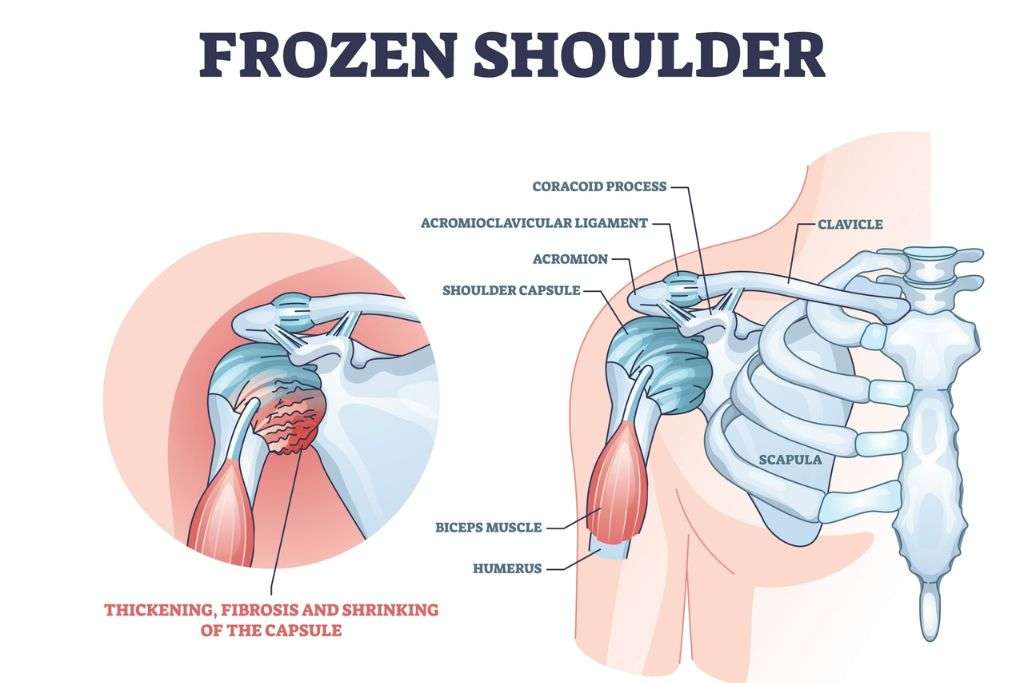
Welcome to Dr. Sayyad’s Orthopaedic Clinic – Your Trusted Destination for Orthopaedic Care
Frozen shoulder, also known as adhesive capsulitis, is a condition characterized by pain and stiffness in the shoulder joint. This debilitating condition can severely limit the range of motion and adversely impact daily activities. Effective treatment is crucial to alleviate symptoms and restore shoulder function. This comprehensive guide explores the symptoms and various treatment options for frozen shoulder.
Symptoms:
The hallmark symptoms of frozen shoulder include persistent pain and restricted mobility in the shoulder joint. Individuals may experience gradual onset shoulder stiffness, making routine tasks such as reaching overhead or behind the back challenging. The condition typically progresses through three stages: pain, freezing, and thawing. Pain is prominent in the early stage, while stiffness intensifies during the freezing stage. Thawing involves gradual improvement in mobility.
Diagnosis:
Diagnosing frozen shoulder involves a thorough examination of medical history, physical examination, and imaging studies such as X-rays or MRI scans. The goal is to rule out other potential causes of shoulder pain and stiffness, ensuring an accurate diagnosis.
Treatment Approaches:
Physical Therapy:
- Physical therapy is a cornerstone of frozen shoulder treatment. Targeted exercises help improve range of motion and reduce stiffness.
- Therapists may employ modalities like heat, ice, and ultrasound to alleviate pain and promote healing.
Medications:
- Nonsteroidal anti-inflammatory drugs (NSAIDs) can help manage pain and inflammation.
- Corticosteroid injections directly into the shoulder joint may be recommended for short-term relief.
Home Care:
- Patients are often advised to perform prescribed exercises at home to maintain and improve shoulder mobility.
- Heat and ice packs can be used as part of a home care routine to manage pain and inflammation.
Joint Distension:
- In some cases, a doctor may use a procedure called joint distension, injecting sterile water into the joint capsule to stretch it and improve mobility.
Manipulation Under Anesthesia (MUA):
- MUA is a procedure where the patient is put under anesthesia, and the doctor manipulates the arm to break up adhesions and improve range of motion.
Surgery:
- Surgical intervention may be considered if conservative treatments fail. Procedures may involve removing scar tissue or releasing the joint capsule.
Lifestyle Modifications:
- Lifestyle adjustments, including ergonomic changes and avoiding activities that exacerbate symptoms, can support the healing process.
Recovery and Outlook:
The duration of frozen shoulder treatment varies, and recovery can take several months to years. Early intervention and consistent adherence to the prescribed treatment plan are essential for optimal outcomes. While most individuals experience significant improvement, some may continue to have mild limitations in shoulder mobility.

